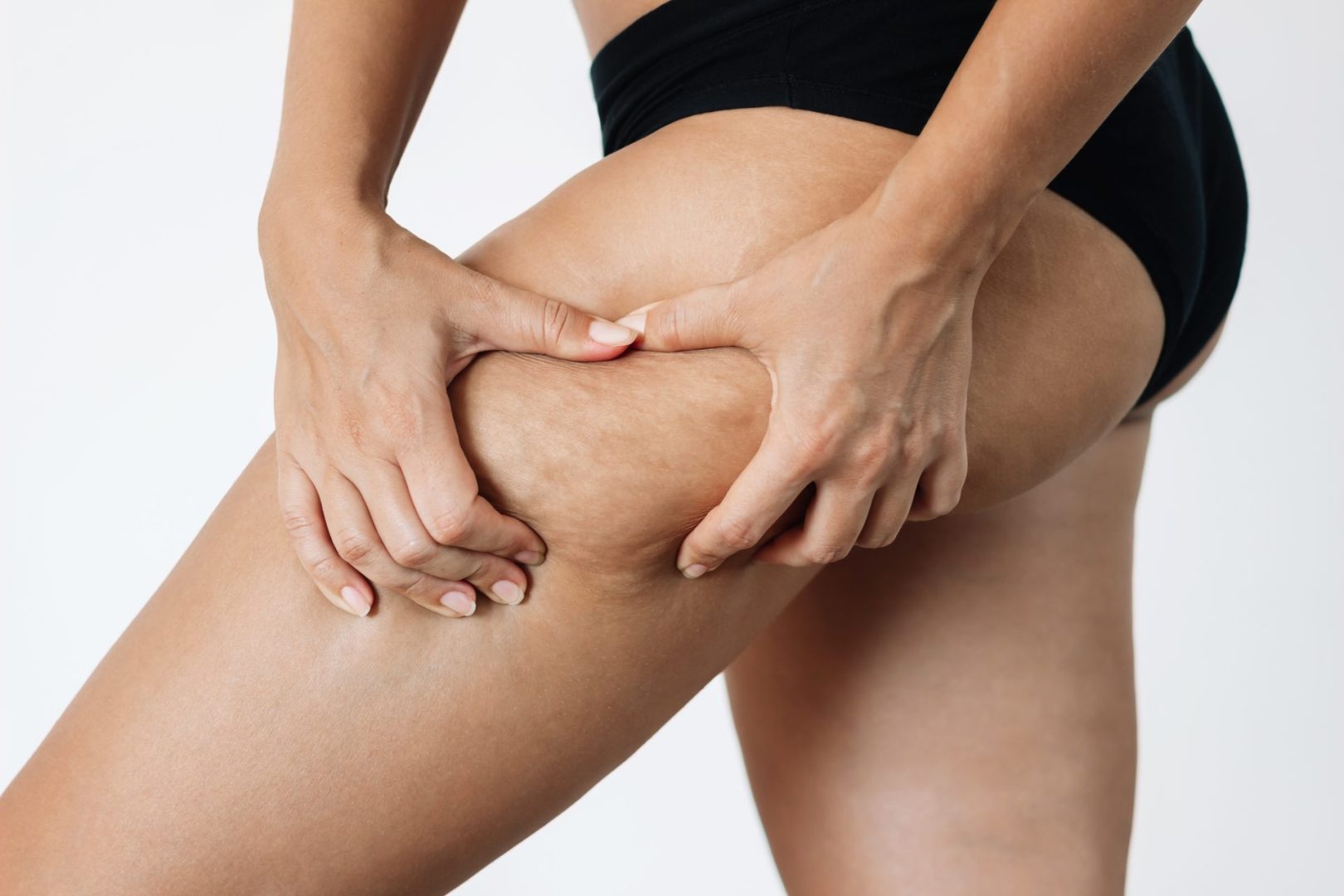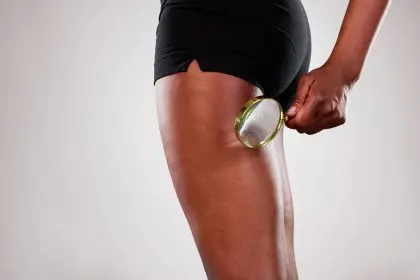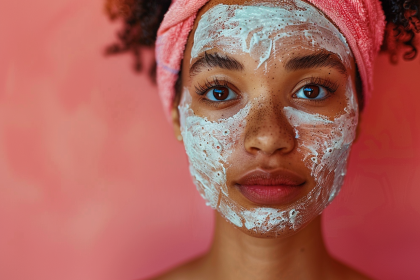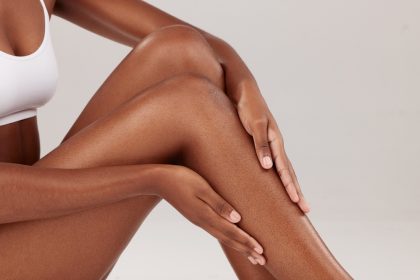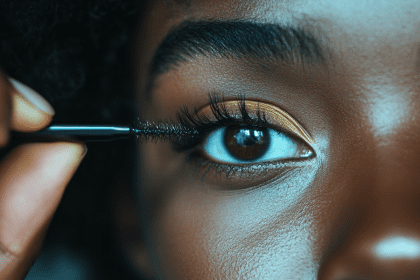Despite billions spent on creams promising smooth thighs, most deliver disappointing results – here’s what research reveals actually makes a difference
The beauty industry generates over $5 billion annually from cellulite treatments, with products promising to magically smooth away those stubborn dimples that affect nearly 90 percent of women. Yet most people who invest in these expensive creams and lotions end up disappointed with the results.
This comprehensive guide examines the real science behind cellulite formation, exposes why most topical treatments fail to deliver, and reveals which approaches genuinely improve this common skin concern according to research and clinical evidence.
The biological reality of cellulite
Contrary to popular belief, cellulite is not simply fat. The characteristic dimpled appearance results from a complex structural arrangement in the skin that differs fundamentally between biological females and males.
In female skin, connective tissue fibers called septae run perpendicular to the skin surface, creating chamber-like compartments that house fat cells. As these fat cells enlarge or the skin loses elasticity, they push against the skin surface while being tethered down by these fibrous bands, creating the characteristic puckered appearance.
Male skin typically has a crisscross pattern of connective tissue that prevents this dimpling, explaining why cellulite affects approximately 90 percent of women but only about 10 percent of men, regardless of weight or fitness level.
Several biological factors influence cellulite development and severity:
- Hormonal influences, particularly estrogen, affect fat distribution and connective tissue structure
- Genetics determine skin thickness, fat distribution patterns, and collagen quality
- Circulation issues can contribute to fluid retention and metabolic waste accumulation
- Age-related skin thinning makes existing cellulite more visible over time
- Lifestyle factors like hydration, activity level, and nutrient intake impact severity
Understanding these structural and biological realities explains why surface-level treatments often fail to deliver meaningful improvements.
Why most cellulite creams deliver disappointing results
The majority of cellulite creams rely on ingredients that simply cannot address the fundamental structural causes of dimpled skin. Most products fall into one of several categories, each with significant limitations:
Caffeine-based formulas temporarily dehydrate fat cells, creating a mild tightening effect that lasts 12-24 hours at most. While these can provide a short-term improvement for special occasions, the effect disappears entirely after the first shower.
Antioxidant creams containing ingredients like retinol or vitamin C may gradually improve skin quality but cannot affect the fibrous bands or fat cell structure causing the dimpling. Studies show minimal improvement even after 12 weeks of consistent application.
Herbal extracts like gotu kola, horse chestnut, or green tea provide temporary circulation benefits but cannot restructure tissue or significantly reduce fat cell size through topical application.
Aminophylline-containing products cause temporary fluid loss through localized sweating but clinical measurements show no actual reduction in fat or lasting structural change.
The fundamental limitation of topical products lies in penetration ability. The active ingredients simply cannot reach the subcutaneous layer where the structural issues occur. Even with advanced delivery systems, creams remain physically incapable of affecting the fibrous septae that cause the dimpled appearance.
Additionally, many product claims rely on measuring thigh circumference rather than actual cellulite appearance. Temporary water loss can reduce measurements while leaving the dimpled texture completely unchanged.
Treatments with proven effectiveness
While most over-the-counter solutions disappoint, several approaches show genuine efficacy in clinical studies when properly administered:
1. Subcision treatments target fibrous bands
The most effective treatments directly address the structural cause of cellulite by physically releasing or cutting the fibrous bands pulling down on the skin.
FDA-approved minimally invasive procedures use specially designed needles or radiofrequency energy to precisely target and release these bands. These treatments show consistency high satisfaction rates with improvements lasting 1-3 years on average.
Clinical studies demonstrate 68-74% improvement in cellulite appearance after a single treatment session. Results remain visible for at least 24 months in the majority of patients, with some maintaining improvements for up to 3 years before requiring retreatment.
The procedure involves local anesthesia and recovery typically takes 1-3 days with minimal downtime. While significantly more expensive than creams (typically $3,000-4,500 per treatment area), the cost over time often proves more economical given the durability of results compared to ongoing product purchases.
2. Acoustic wave therapy builds collagen and improves circulation
This non-invasive approach uses sound waves to stimulate collagen production, improve local circulation, and gradually modify the connective tissue structure that contributes to cellulite.
Unlike one-time treatments, acoustic wave therapy requires multiple sessions (typically 6-10) spaced over several weeks. Studies show 45-55% improvement in cellulite appearance after a complete treatment series with results lasting 6-12 months.
Key advantages include zero downtime and a completely non-invasive approach, making it suitable for those who prefer to avoid even minimally invasive procedures. Costs typically range from $1,500-2,500 for a full treatment series.
3. Targeted muscle stimulation reshapes underlying tissues
Advanced muscle stimulation technologies using electromagnetic energy or electrical stimulation can strengthen and build muscle beneath cellulite-prone areas, providing more structural support and improving overall contour.
These treatments require 4-6 sessions and produce dual benefits: muscle toning and increased metabolic activity in the treated areas. Clinical measurements show approximately 1.5-2cm reduction in thigh circumference alongside visible texture improvement.
The advantage of this approach lies in addressing multiple contributors to cellulite appearance simultaneously while providing additional fitness benefits beyond cosmetic improvement.
4. Radiofrequency treatments tighten skin and modify fat
The most effective radiofrequency devices combine two actions: heating the dermal layer to stimulate collagen production and delivering energy to the fat layer to modify cell structure.
Advanced systems use precise temperature monitoring to ensure optimal heating without discomfort or risk. Studies demonstrate 34-42% improvement in cellulite after a series of treatments, with results developing gradually over 3-6 months as collagen remodeling occurs.
The advantages include progressive improvement that continues after the treatment series ends and complementary benefits for overall skin tightness and texture. Most patients require maintenance sessions every 6-12 months to sustain results.
The surprising impact of targeted exercise
While general weight loss typically does not significantly improve cellulite, specific strength training approaches show measurable impact on both appearance and underlying structure.
Targeted resistance exercises focusing on the gluteal muscles, hamstrings, and quadriceps create three beneficial effects:
- Building muscle beneath cellulite-prone areas provides more structural support
- Improving circulation enhances removal of metabolic waste and excess fluid
- Increasing metabolic activity helps modify fat cell size and distribution
Research demonstrates that participants following a targeted strength program 3 times weekly for 12 weeks showed approximately 25-35% improvement in cellulite appearance based on standardized assessment scales.
The most effective exercises include progressively challenging variations of:
- Squats with various stances to target different muscle groups
- Lunges with multiple directional components
- Hip thrusts and bridges for posterior chain activation
- Step-ups with increasing height and resistance
Unlike general cardio exercise, these strength-focused movements create specific tension patterns that gradually modify both the fat distribution and the connective tissue structure involved in cellulite formation.
Nutritional approaches with clinical support
While no specific diet eliminates cellulite entirely, several nutritional strategies show measurable impact on severity and appearance:
Consistent hydration improves circulation and lymphatic function that helps minimize fluid retention contributing to cellulite visibility. Clinical measurements show that increasing water intake to at least 2 liters daily reduces the appearance of cellulite by approximately 10% after 8 weeks.
Omega-3 fatty acids help modulate the inflammatory processes that can contribute to compromised circulation in cellulite-prone areas. Participants consuming 1,000-2,000mg daily of combined EPA/DHA showed improved skin elasticity measurements after 12 weeks.
Collagen peptide supplementation provides building blocks for strengthening the dermal matrix that supports skin structure. Research demonstrates 9% improvement in skin density and reduced waviness after 6 months of daily supplementation with 2.5-5g of specific bioavailable collagen peptides.
Antioxidant-rich foods help protect collagen from degradation while supporting healthy circulation. While these dietary changes work subtly, they provide cumulative benefits when maintained consistently over time.
Combining approaches for optimal results
The most successful cellulite improvement typically involves combining multiple evidence-based strategies rather than relying on a single solution.
A comprehensive approach might include:
- Professional treatments to address structural factors (subcision or acoustic wave therapy)
- Consistent targeted strength training 2-3 times weekly
- Nutrition optimization focusing on hydration, anti-inflammatory foods, and collagen support
- High-quality topical products containing ingredients that genuinely improve skin quality over time
Improvement usually develops gradually over 3-6 months with continued enhancement as approaches are maintained. Managing expectations remains important – even the most effective combinations typically provide 50-75% improvement rather than complete elimination.
The psychological impact worth considering
The psychological burden of cellulite concerns affects many women significantly. Studies reveal that cellulite concerns impact clothing choices for 86% of affected women and influence intimate relationship comfort for nearly 40%.
While physical treatments address the visible manifestations, addressing the psychological component often proves equally important. This might involve:
Recognizing that some degree of cellulite affects nearly all women regardless of size or fitness Understanding the biological factors that make complete elimination unrealistic Focusing on overall health benefits of positive habits rather than exclusively on appearance Appreciating body functionality alongside aesthetic considerations
These perspective shifts often provide psychological relief that complements physical improvements.
Making informed treatment decisions
When evaluating any cellulite treatment, consider these evidence-based criteria:
Does it address one or more of the structural causes (fibrous bands, skin laxity, fat cell size/distribution)? Can the active ingredients or energy reach the appropriate tissue depth? Does independent research (not manufacturer studies) support the efficacy claims? Are before/after images taken with consistent lighting, positioning, and without editing? Does the provider disclose typical results rather than best-case outcomes?
Treatments meeting these criteria typically deliver more satisfying results than those making spectacular claims without addressing fundamental structural factors.
For lasting improvement, approaching cellulite as a complex structural condition rather than a simple cosmetic concern allows for more realistic expectations and more effective treatment selections. While no treatment eliminates cellulite entirely, the evidence-based approaches outlined here can provide meaningful improvement that enhances both appearance and confidence.

